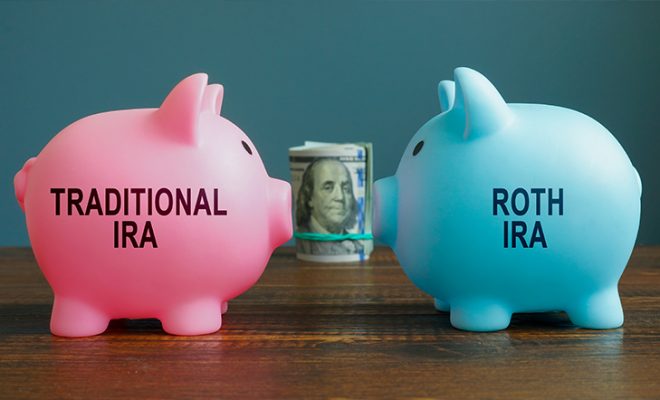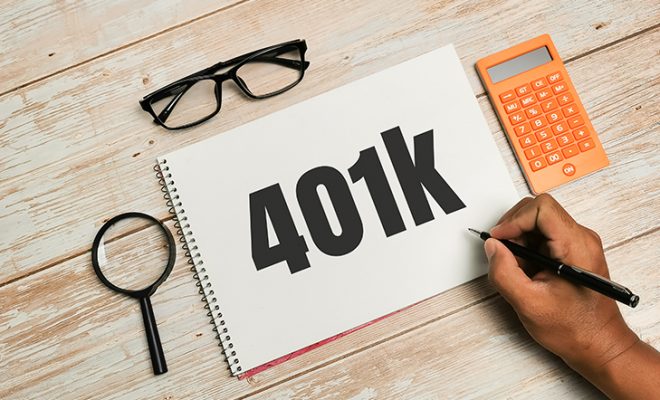How Roth IRA Fees Affect Your Return on Investment

Fees! They can be the bane of many retirement accounts. They cost you money, which is never fun, and they eat into your returns, which can be frustrating over the long term.
But they exist.
Just like taxes and inflation, fees are part of investing, and there is nothing you can do about them. While unavoidable, they are manageable. The key is not to ignore them, but to understand them, so you can make smarter choices and minimize their impact. Roth Individual Retirement Accounts (IRAs), like many other retirement accounts, come with fees.
Understanding these Roth IRA fees is essential because they directly affect how much your money grows. So, learn about them, plan for them, and make choices that reduce their long-term impact. This article can help you understand what fees you will pay on your Roth IRA, help you make Roth IRA fee comparison tables, and plan for your future.
What are Roth IRA fees?
Roth IRA fees are what you pay when using your Roth IRA account. Opening a Roth IRA usually does not cost you anything, and most providers allow you to start an account without paying a dime. But once your account is active, there can be ongoing costs. For instance, you would pay an IRA management fee on transactions. These transaction fees or commissions change every time you buy or sell an investment in your Roth IRA, such as stocks or bonds. Depending on the brokerage or platform you use, these fees can range from as little as $5 to $20 per trade. If you trade frequently, these costs can add up. But if you do not trade actively, you do not have to worry about them as much.
Another category is account maintenance fees. Some Roth IRA providers charge a small monthly or annual fee simply to keep your account open. This is also referred to as a custodial fee. These typically range from $25 to $50 per year, though many providers waive them if you maintain a minimum balance. If your Roth IRA holds mutual funds, you would also pay an expense ratio.
Mutual funds charge these fees to cover their operating costs. Expense ratios can range widely, from as low as 0.25% to as high as 2%. These differ depending on whether you invest in passive or active mutual funds. Passive funds cost less than active ones. However, on average, mutual fund expense ratios sit around 0.50%. Mutual funds also have a sales load, sometimes called a sales fee. This is a charge that occurs every time you buy or sell shares of certain mutual funds. Not all mutual funds have sales loads, and many low-cost or no-load funds may not have these entirely, so your choice of funds would determine how much you pay.
How do fees impact returns on your Roth IRA?
Well, let’s put things in perspective with an example.
Let’s say you have $100,000 invested in a Roth IRA, and your investments earn an average annual return of 6%. If you left your money untouched for 20 years, compounding at 6% each year, your account would grow to roughly $320,714. Let’s say your investments carry 2% in annual Roth IRA fees. With a 2% fee, your net annual return drops from 6% to 4%. Using the same $100,000 initial investment over 20 years, your account now grows to only about $219,112. Quite a blow, right?
Without fees, you had over $320,000. With fees, you end up with just over $219,000. That is a difference of more than $100,000. This clearly shows how small annual charges can compound over the years and impact your retirement nest egg. If you look at a 30-year horizon, that $100,000 at 6% without fees would grow to around $574,000. But with 2% annual Roth IRA fees, the same investment would only grow to about $324,000. That is a difference of nearly $250,000! As you can see, fees can dramatically change your retirement.
How can you ensure that your Roth IRA fees do not impact your returns so intensely?
Thankfully, you can take several steps to reduce the impact of fees on your Roth IRA earnings. Let’s discuss some of the strategies you can apply:
1. Compare different Roth IRA accounts and the fees they carry
Roth IRAs are offered by a wide range of providers, so it is important to carefully compare your options. Fees, account requirements, and investment choices can vary quite a bit from one IRA provider to another, and these differences will impact your long-term returns.
You need to compare all fees carefully. Now, some Roth IRA fees are easy to spot because they are expressed as a percentage of your account balance, like mutual fund expense ratios. Others are more subtle, like account maintenance fees or transaction fees. So, you may have to do a bit of deep diving. For example, one provider might charge a small annual maintenance fee of $25, while another might not charge anything at all.
At first glance, you might think the provider with no maintenance fee is the clear winner, but the comparison does not stop there. You also need to check transaction fees as providers can differ on these, too. If you plan to trade stocks or bonds within your Roth IRA actively, high transaction fees can eat into your returns.
On the other hand, if you are investing in long-term index funds or holding investments without frequent buying and selling, those same transaction fees may hardly matter. This is why it is important to match the fee structure with your personal investing style.
Some Roth IRA providers charge fees when you open an account, while others do not. You might find that one company has a free account opening but higher ongoing fees, while another charges a small upfront fee but keeps costs low throughout the year. You will need to weigh these factors carefully.
Another key factor is account minimums. Some Roth IRAs require you to invest a minimum amount to open an account. If you are just starting, a high minimum could be a bummer. In this case, you may look for providers that allow you to open an account with smaller amounts if that fits your situation. But if you are a high-net-worth individual or earn a considerably higher income, you may consider these accounts.
You should also consider the investment options available through the provider. Some companies offer a wide range of bonds, bond funds, and individual stocks, while others are more limited. Select a company that offers the types of investments you want in your Roth IRA and make sure the provider offers them without charging excessive fees.
2. Invest for many, many years – as many as you can before you retire
The example shared earlier, where you saw the impact of 2% fees on your retirement earnings, was not just to show you how fees add up, but also to illustrate the magic of long-term compounding.
Imagine you invest $100,000 in a Roth IRA and your investments earn an average annual return of 6%. If you leave that money untouched for 20 years and let compounding do its magic, your account could grow to roughly $320,714. Now, yes, there are fees. Suppose your investments have a 2% annual fee. That reduces your net return to 4%, and over 20 years, your account would grow to about $219,112. But even with fees, your $100,000 more than doubles. So, while fees are a drag, when you compare them to the benefits of time and compounding, you still walk away with a gain.
Now, if you stay invested for longer, say over 30 years, that $100,000 invested at 6% grows to around $574,000 fee-free. With 2% in fees, it still reaches approximately $324,000. Even here, the returns are remarkable. In fact, they have grown more than three times your original investment.
While fees reduce the total slightly, the long-term growth is what really matters. The key is to focus on your net returns, not just what you earn or what you pay in fees in a single year. Over time, if you focus on investing regularly and for the long run, compounding will generally outweigh the impact of moderate fees. The earlier you start, the more time you will have to grow your retirement nest egg. So, instead of getting discouraged by fees, focus on what you can do, which is invest for the long run.
3. Select low-cost investments
There are investments that cost less. You can protect your Roth IRA from unnecessary costs by choosing these low-cost investment options. Index funds, for example, typically carry much lower fees than actively managed mutual funds. So, you may add more of them if you are concerned about fees. Another way to keep Roth IRA fees down is to reduce the number of transactions you make. Frequent buying and selling can rack up costs, like trading fees and commissions. But if you adopt a buy-and-hold strategy and stay invested, you may be able to outperform frequent trading while keeping costs low.
Of course, the key is balance. You would not want to cut fees so aggressively that it limits your potential growth or prevents you from meeting your retirement goals. You can speak to a financial advisor about this. A financial advisor can help you select low-cost funds that align with your long-term objectives. Remember, fees are necessary, but they must not come in the way of your goals.
4. Go into high gear and maximize your Roth IRA contributions
For 2025, the standard contribution limit is $7,000 per year. If you are 50 or older, the IRS allows an additional $1,000 catch-up contribution, bringing your total annual contribution to $8,000. Taking full advantage of these limits each year can make a huge difference over time in how Roth IRA fees look.
The more you contribute early and consistently, the more your investments can benefit from compound growth. Even though fees exist, contributing more and staying invested reduces their impact and helps you focus on the bigger picture, which is long-term returns. Catch-up contributions are especially powerful. If you are in your 50s or early 60s, you can boost your retirement savings. Moreover, your Roth IRA grows tax-free, and qualified withdrawals in retirement are also tax-free. So, your contributions have the potential to compound tax-free.
Your eligibility to contribute depends on your income. For single filers in 2025, your Modified Adjusted Gross Income (MAGI) must be under $150,000 to make a full Roth IRA contribution. For married couples filing jointly, your MAGI must be under $236,000. Keep these thresholds in mind as you plan your contributions. Here’s a detailed table that can help:
| MAGI for single filers | MAGI for married filing jointly | MAGI for married filing separately (MAGI) | Maximum contribution if you are under age 50 | Maximum contribution if you are 50 or older |
| Under $150,000 | Under $236,000 | $0 | $7,000 | $8,000 |
| $151,500 | $237,000 | $1,000 | $6,300 | $7,200 |
| $153,000 | $238,000 | $2,000 | $5,600 | $6,400 |
| $154,500 | $239,000 | $3,000 | $4,900 | $5,600 |
| $156,000 | $240,000 | $4,000 | $4,200 | $4,800 |
| $157,500 | $241,000 | $5,000 | $3,500 | $4,000 |
| $159,000 | $242,000 | $6,000 | $2,800 | $3,200 |
| $160,500 | $243,000 | $7,000 | $2,100 | $2,400 |
| $162,000 | $244,000 | $8,000 | $1,400 | $1,600 |
| $163,500 | $245,000 | $9,000 | $700 | $800 |
| $165,000 or over | $246,000 or over | $10,000 or over | $0 | $0 |
In the end
Roth IRA fees can feel troublesome because they eat into your returns. The higher the fees, the more you will likely lose out on growth potential. But there is a silver lining. You can manage these costs with a few smart strategies. Long-term investing, for instance, allows compounding returns to work in your favor. Maximizing your contributions each year can also make a huge difference and make the fees look smaller in comparison. Choosing suitable, low-cost investments is another effective move. So, make sure you compare different IRA plans and fund options to avoid a rip-off.
While you can manage your Roth IRA independently, consulting a qualified financial advisor can make your strategy more fruitful. A professional can help you identify cost-efficient funds and minimize unnecessary fees. If you are unsure where to start, you may use our financial advisors directory to find trusted advisors near you.
For further information on creating a suitable retirement plan for your unique financial requirements, visit Dash Investments or email me directly at dash@dashinvestments.com.
About Dash Investments
Dash Investments is privately owned by Jonathan Dash and is an independent investment advisory firm, managing private client accounts for individuals and families across America. As a Registered Investment Advisor (RIA) firm with the SEC, they are fiduciaries who put clients’ interests ahead of everything else.
Dash Investments offers a full range of investment advisory and financial services, which are tailored to each client’s unique needs providing institutional-caliber money management services that are based upon a solid, proven research approach. Additionally, each client receives comprehensive financial planning to ensure they are moving toward their financial goals.
CEO & Chief Investment Officer Jonathan Dash has been covered in major business publications such as Barron’s, The Wall Street Journal, and The New York Times as a leader in the investment industry with a track record of creating value for his firm’s clients.










